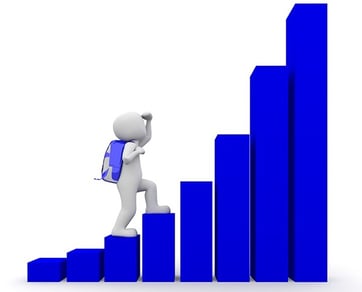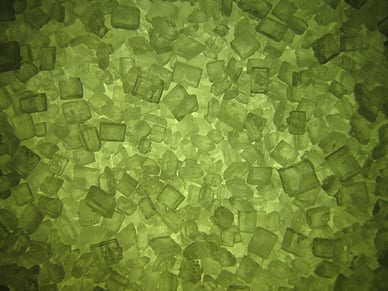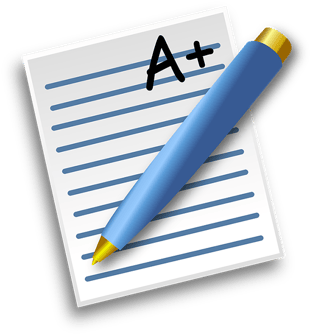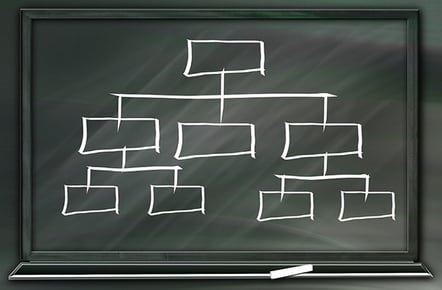
What does an AP Chemistry syllabus look like? How many labs do you have to do? And what skills are you expected to learn before the test?
In this article, I'll take an in-depth look at the components of a successful AP Chemistry syllabus, including content coverage, lab work, and overall curriculum requirements. I'll also give an example of a full syllabus (based on a sample from the College Board) and provide some helpful tips for both students and teachers!
What Does the AP Chemistry Course Cover?
AP Chemistry is a wide-ranging course. The curriculum is divided into nine units that encompass long lists of smaller topics. I'll list the units along with the smaller themes within them.
There are also seven Scientific Practices that students are expected to master in the course, which I'll list after the Big Ideas. This is a part of the new inquiry-based model of AP science courses that encourages independent thinking. Finally, there are some overarching Curricular Requirements that every AP Chemistry class must fulfill, which I'll go over after the Scientific Practices. For the full course description with even more details, consult this link!
The 9 Units of AP Chemistry
These are the fundamental concepts every AP Chemistry syllabus must cover (although not necessarily in this order).
Unit 1: Atomic Structure and Properties
- Moles and molar mass
- Mass spectroscopy of elements
- Elemental composition of pure substances
- Composition of mixtures
- Atomic structure and electron configuration
- Photoelectron spectroscopy
- Periodic trends
- Valence electrons and ionic compounds
Unit 2: Molecular and Ionic Compound Structure and Properties
- Types of chemical bonds
- Intramolecular force and potential energy
- Structure of ionic solids
- Structure of metals and alloys
- Lewis diagrams
- Resonance and formal charge
- VSEPR and bond hybridization
Unit 3: Intermolecular Forces and Properties
- Intermolecular forces
- Properties of solids
- Solids, liquids, and gases
- Ideal gas law
- Kinetic molecular theory
- Deviation from ideal gas law
- Solutions and mixtures
- Representations of solutions
- Separation of solutions and mixtures chromatography
- Solubility
- Spectroscopy and the electromagnetic spectrum
- Photoelectric effect
- Beer-Lambert Law
Unit 4: Chemical Reactions
- Introduction for reactions
- Net ionic equations
- Representations of reactions
- Physical and chemical changes
- Stoichiometry
- Introduction to titration
- Types of chemical reactions
- Introduction to acid-base reactions
- Oxidation-reduction (redox) reactions
Unit 5: Kinetics
- Reaction rates
- Introduction to rate law
- Concentration changes over time
- Elementary reactions
- Collision model
- Reaction energy profile
- Introduction to reaction mechanisms
- Reaction mechanism and rate law
- Steady-state approximation
- Multistep reaction energy profile
- Catalysis
Unit 6: Thermodynamics
- Endothermic and exothermic processes
- Energy diagrams
- Heat transfer and thermal equilibrium
- Heat capacity and calorimetry
- Energy of phase changes
- Introduction of enthalpy of reaction
- Bond enthalpies
- Enthalpy of formation
- Hess's Law
Unit 7: Equilibrium
- Introduction to equilibrium
- Direction of reversible reactions
- Reaction quotient and equilibrium constant
- Calculating the equilibrium constant
- Magnitude of the equilibrium constant
- Properties of the equilibrium constant
- Calculating the equilibrium concentrations
- Representations of equilibrium
- Introduction to Le Chatelier's Principle
- Reaction quotient and Le Chatelier's Principle
- Introduction to solubility equilibria
- Common-ion effect
- pH and solubility
- Free energy of dissolution
Unit 8: Acids and Bases
- Introduction to acids and bases
- pH and pOH of strong acids and bases
- Weak acid and base equilibria
- Acid-base reactions and buffers
- Acid-base titrations
- Molecular structures of acids and bases
- pH and pKa
- Properties of buffers
- Henderson-Hasselbalch equation
- Buffer capacity
Unit 9: Applications of Thermodynamics
- Introduction to entropy
- Absolute entropy and entropy change
- Gibbs Free Energy and thermodynamic favorability
- Thermodynamic and kinetic control
- Free energy and equilibrium
- Coupled reactions
- Galvanic (Voltaic) and electrolytic cells
- Cell potential and free energy
- Cell potential under nonstandard conditions
- Electrolysis and Faraday's Law
 This unit is huge by itself, and now you're telling me there are eight more??? Sigh. Another day another dollar.
This unit is huge by itself, and now you're telling me there are eight more??? Sigh. Another day another dollar.
The 6 Scientific Practices of AP Chemistry
These six "scientific practices" represent skills that students are expected to learn in AP Chemistry. Many of these relate to correct implementation of the scientific method in a lab context. They're especially tied to the "Guided Inquiry" labs, where students work independently to plan and conduct experiments.
#1: The student can describe models and representations, including across scales.
#2: The student can determine scientific questions and methods.
#3: The student can create representations or models of chemical phenomena
#4: The student can analyze and interpret models and representations on a single scale or across multiple scales.
#5: The student can solve problems using mathematical relationships.
#6: The student can develop an explanation or scientific argument.
AP Chemistry Curricular Requirements
The curricular requirements are concrete statements of expectations for the AP Chemistry course. These include requirements for the types of materials teachers must use in class, the structural framework of the course, the opportunities students should receive, and the percentage of class time devoted to labs.
- The course must use a recently published (within the past ten years) college-level chemistry textbook.
- The course must be structured around the nine units as described in the AP Chemistry curriculum framework.
- Students should have opportunities outside of laboratory investigations to meet the learning objectives within each of the big ideas in the AP Chemistry curriculum.
- Students have the opportunity to connect their knowledge of chemistry and science to major societal or technological components to help them become scientifically literate citizens.
- Labs make up 25 percent of the instructional time at minimum and include at least 16 hands-on experiments.
- Lab investigations allow students to apply the seven science practices, and at least 6 of the 16 labs are conducted in a guided-inquiry format. "Guided inquiry" labs put students at the center of the learning process, encouraging them to pose, develop, and experimentally investigate questions (self-generated or supplied). Other more traditional labs are teacher-directed, which means that teachers provide not only the questions for investigation, but also set procedures and data collection strategies for student use.
- The course provides opportunities for students to develop, record, and maintain evidence of their verbal, written, and graphic communication skills through lab reports, summaries of literature or scientific investigations, and oral, written, and graphic presentations.
 Keep in mind that it takes a while for most students to learn how to hold presentation materials in ways that don't completely obscure their faces. Work on it. You'll get there, buddy.
Keep in mind that it takes a while for most students to learn how to hold presentation materials in ways that don't completely obscure their faces. Work on it. You'll get there, buddy.
What Does an AP Chemistry Syllabus Look Like?
The following is a summary of a sample syllabus supplied by the College Board that goes through all the units that would be taught in a standard AP Chemistry course. It also provides the number of class periods allotted for each unit. This syllabus is based on the pre-2019 updates to the course, but College Board has stated class syllabi don't need to be updated as a result, so it still covers all up-to-date information. (The course materials below have been updated.) Check out the AP Chemistry course description for more information on how many class periods to spend on each of the new units.
In this example, the class periods are 52 minutes long. You can read the full syllabus here.
Course Materials
Primary Textbook
Chang, Raymond. Chemistry, AP Edition.13th Edition. McGraw-Hill Education. 2018
Other Resources Used
- Kotz, John C., Paul M. Treichel, John R. Townsend, and David Treichel. Chemistry and Chemical Reactivity. 10th edition. National Geographic Learning/Cengage Learning. 2018.
- Silberberg, Martin. Chemistry: The Molecular Nature of Matter and Change, AP Edition. 7th edition. McGraw-Hill Education. 2015.
- Smith, Cheri, Gary Davidson, Megan Ryan, and David Toth. Edvantage Chemistry. 1st edition. Edvantage Interactive. 2017.
- Zumdahl, Steven S., Susan A. Zumdahl, and Donald J. DeCoste. Chemistry (AP Edition). 10th edition. National Geographic Learning/Cengage Learning. 2017.
- Jespersen, Neil D., and Alison Hyslop. Chemistry: The Molecular Nature of Matter. 8th edition. Wiley. 2017.
#1: Chemistry Fundamentals
- 12 Class Periods
- 10 Problem sets
- 2 Quizzes
- 1 Exam
Topics
- Scientific method
- Classification of matter
- Nomenclature and formulas of binary compounds
- Polyatomic ions and other compounds
- Determination of atomic masses
- Mole concept
- Percent composition
- Empirical and molecular formula
- Writing chemical equations and drawn representations
- Balancing chemical equations
- Applying mole concept to chemical equations (stoichiometry)
- Determining limiting reactants, theoretical and percent yield of reactions
Labs
Math and Measurement in Science
Students learn how to measure mass and volume with varied pieces of equipment and focus on the accuracy of those pieces of equipment in their calculation and determination of significant figures. Students also determine the identity of an unknown organic liquid using density determination.
Guided Inquiry Lab: Physical and Chemical Properties
Students are given the materials to conduct various procedures. They construct a procedure for each of the eight changes to be observed, have their procedures approved by the instructor, and then carry out the procedures. The data collected is used to develop a set of criteria for determining whether a given change is chemical or physical.
Stoichiometry Lab
Students determine the correct mole ratio of reactants in an exothermic reaction by mixing different amounts of reactants and graphing temperature changes.
#2: Types of Chemical Equations
- 8 Class Periods
- 4 Problem Sets
- 3 Quizzes
- 1 Exam
Topics
- Electrolytes and properties of water
- Molarity and preparation of solutions
- Precipitation reactions and solubility rules
- Acid-Base reactions and formation of a salt by titration
- Balancing redox reactions
- Simple redox titrations
- Gravimetric calculations
Labs
pH Titration Lab
Students perform a titration and then determine the concentration of an HCl solution by using a potentiometric titration curve and finding the equivalence point. Data is graphed in a graphing program.
Bleach Lab
Students perform redox titrations to determine the concentration of hypochlorite in household bleach.
Online Redox Titration Activity
Online lab simulation where students can manipulate various factors to influence a redox titration.
#3: AP Style Net Ionic Equations
- 8 Class Periods
- 6 Problem Sets
- 4 Quizzes
- 1 Exam
Topics
- Redox and single replacement reactions
- Double replacement reactions
- Combustion reactions
- Addition reactions
- Decomposition reactions
Labs
Copper Reaction Lab
Students perform a series of reactions, starting with copper and ending with copper. Students then calculate percent recovered.
#4: Gas Laws
- 8 Class Periods
- 5 Problem Sets
- 3 Quizzes
- 1 Exam
Topics
- Measurement of gases
- General gas laws - Boyle, Charles, Combined, and Ideal
- Dalton's Law of partial pressure
- Molar volume of gases and stoichiometry
- Graham's Law
- Kinetic Molecular Theory
- Real gases and deviation from ideal gas law
- Graham's law demonstration
Labs
Molecular Mass of a Volatile Liquid
Students use the Dumas method for determination of the molar mass of an unknown volatile liquid.
#5: Thermochemistry
- 8 Class Periods
- 5 Problem Sets
- 3 Quizzes
- 1 Exam
Topics
- Law of conservation of energy, work, and internal energy
- Endothermic and exothermic reactions
- Potential energy diagrams
- Calorimetry, heat capacity, and specific heat
- Hess's Law
- Heat of formation/combustion
- Bond energies
Labs
Guided Inquiry Lab: Hess's Law
Students perform a series of reactions and calculate enthalpy, proving Hess's law.
Activity: Online Heating and Cooling Curve Simulations
#6: Atomic Structure and Periodicity
- 12 Class periods
- 9 Problem sets
- 4 Quizzes
- 1 Exam
Topics
- Electron configuration and the Aufbau principle
- Valence electrons and Lewis dot structures
- Periodic trends
- Table arrangement based on electronic properties
- Properties of light and study of waves
- Atomic spectra of hydrogen and energy levels
- Quantum mechanical model
- Quantum theory and electron orbitals
- Orbital shape and energies
- Spectroscopy
Labs
Spectroscopy Lab
Students look at a series of emission spectra and determine the identity of an unknown. They will also receive and analyze IR and mass spectroscopy data.
Activity: Periodic Table Dry Lab
Students graph values for atomic radius, electronegativity, and ionization energy to predict trends and explain the organization of the periodic table.
#7: Chemical Bonding
- 11 Class Periods
- 8 Problem Sets
- 4 Quizzes
- 1 Exam
Topics
- Lewis Dot structures
- Resonance structures and formal charge
- Bond polarity and dipole moments
- VSEPR models and molecular shape
- Polarity of molecules
- Lattice energies
- Hybridization
- Molecular orbitals and diagrams
Labs
Guided Inquiry: Bonding Lab
Students experimentally investigate ionic and molecular substances deducing properties of their bonds in the process.
Guided Inquiry: Investigation of Solids
Students investigate types of solids using various experimental techniques.
Activity: Atomic Theory Dry Lab (Students make drawings of a series of molecules and, from those drawings, predict geometry, hybridization, and polarity)
#8: Liquids, Solids, and Solutions
- 6 Class Periods
- 4 Problem Sets
- 2 Quizzes
- 1 Exam
Topics
- Structure and bonding
- Metals, network, and molecular
- Ionic, hydrogen, London, van der Waals
- Vapor pressure and changes in state
- Heating and cooling curves
- Composition of solutions
- Colloids and suspensions
- Separation techniques
- Effect on biological systems
Labs
Solution Preparation Lab
Students make solutions of specified concentrations gravimetrically and by dilution. Solution concentrations will be checked for accuracy using a spectrophotometer.
Vapor Pressure of Liquids Lab
Students measure the vapor pressure of ethanol at different temperatures to determine ∆H.
Activity: Effect on Biological Systems
Students examine a demonstration size model of DNA or an alpha helix, and use their fingers to identify which atoms / base pairs are particularly involved in hydrogen bonding within the molecule, causing the helical structure. Students then discuss how the increased UV light because of ozone depletion can cause chemical reactions and thus mutations and disruption of hydrogen bonding.
#9: Kinetics
- 9 Class Periods
- 3 Problem Sets
- 3 Quizzes
- 1 Exam
Topics
- Rates of reactions
- Factors that affect rates of reactions/ collision theory
- Reaction Pathways
- Rate equation determination
- Rate constants
- Mechanisms
- Method of initial rates
- Integrated rate laws
- Activation energy and Boltzmann distribution
Labs
Guided Inquiry: Determining Order of a (Crystal Violet) Reaction
Using colorimetry and Beer's law, students determine the order of a reaction and its rate law.
Determining the Activation Energy of a Reaction
Students use the same set-up as in the crystal violet lab, but, this time, varying temperature to calculate the activation energy with the use of the Arrhenius equation.
Activity: Online Kinetics Activity
Using a web-based simulation, students will study the elementary steps of a mechanism and how it relates to reaction rate and collision theory.
#10: General Equilibrium
- 6 Class Periods
- 4 Problem Sets
- 3 Quizzes
- 1 Exam
Topics
- Characteristics and conditions of chemical equilibrium
- Equilibrium expression derived from rates
- Factors that affect equilibrium
- Le Chatelier's principle
- The equilibrium constant
- Solving equilibrium problems
Labs
Determination of a Kc with Varied Initial Concentrations
Students use a spectrophotometer to determine the Kc of a series of reactions.
Activity: Online Gas Phase Equilibrium Activity
In the online inquiry activity, students are able to manipulate the environment and produce stresses that verify the tendency of Le Chatelier's principle.
#11: Acids and Bases
- 8 Class Periods
- 4 Problem sets
- 3 Quizzes
- 1 Exam
Topics
- Definition and nature of acids and bases
- Kw and the pH scale
- pH of strong and weak acids and bases
- Polyprotic acids
- pH of salts
- Structure of Acids and Bases
Labs
Determination of a Ka by Half Titration
Students do a titration in which ½ of the weak acid titrated is neutralized (aka midpoint), and then the Ka is determined.
#12: Buffers, Ksp, and Titrations
- 11 Class Periods
- 6 Problem Sets
- 4 Quizzes
- 1 Exam
Topics
- Characteristics and capacity of buffers
- Titrations and pH curves
- Choosing Acid-Base Indicators
- pH and solubility
- Ksp Calculations and Solubility Product
Labs
Guided Inquiry: Types of Titrations
Students investigate titration curves by doing titrations of different combinations of weak and strong acids and bases.
Guided Inquiry: Preparation of a Buffer
Given a selection of chemicals, students prepare a buffer of a given pH.
Molar Solubility and Determination of Ksp
Students find the Ksp of calcium hydroxide doing a potentiometric titration with the addition of methyl orange indicator for verification.
#13: Thermodynamics
- 10 Class Periods
- 5 Problem Sets
- 3 Quizzes
- 1 Exam
Topics
- Laws of thermodynamics
- Spontaneous process and entropy
- Spontaneity, enthalpy, and free energy
- Free energy
- Free energy and equilibrium
- Rate and Spontaneity
Labs
Solubility and Determination of ΔH°, ΔS°, ΔG° of Calcium Hydroxide
Students collect and analyze data to determine ΔH°, ΔS°, and ΔG° of calcium hydroxide.
#14: Electrochemistry
- 8 Class Periods
- 5 Problem Sets
- 4 Quizzes
- 1 Exam
Topics
- Balancing redox equations
- Electrochemical cells and voltage
- The Nernst equation
- Spontaneous and non-spontaneous equations
- Chemical applications
Labs
Voltaic Cell Lab
Students find the reduction potentials of a series of reactions using voltaic cells/multi-meters and build their own reduction potential table. Dilutions will be made, and the Nernst equation will also be tested.
Final AP Review
- 16 Class Periods
- 4 Quizzes
- 4 Exams
Topics
- Review of ALL topics
- 4 AP-Style Review Exams
- Mock AP Test
Labs
The Green Crystal Lab
A series of labs completed over a 4-week period. Students work at their own pace in pairs. The goal of this lab is to determine the empirical formula of a ferrioxalate crystal. It includes the following experiments:
- Experiment 1: Synthesis of the crystal
- Experiment 2: Standardization of KMnO4 by redox titration
- Experiment 3: Determination of % oxalate in crystal by redox titration
- Experiment 4: Standardization of NaOH by acid/base titration
- Experiment 5: Determination of % K+ and Fe3+ by ion exchange chromatography and a double equivalence point titration
- Experiment 6: Determination of the % water in the hydrated crystal
 Green crystals!!! Actually, the green crystals for the lab look even cooler than that.
Green crystals!!! Actually, the green crystals for the lab look even cooler than that.
Teaching Tips for AP Chemistry
These are some tips I came up with for AP Chemistry teachers based on my experiences as a student in the course. I struggled a lot with chemistry in high school (partially because my teacher wasn't very good), so here are a few things that I think would have helped me out at the time.
Tip 1: Do Plenty of Sample Problems in Class (and Go Over Homework Thoroughly)
When I was in AP Chemistry, I had a hard time understanding how to solve complex multi-step problems. I often couldn't figure them out on my own, even when I had read examples in the textbook and seen my teacher go through similar examples. I'd advise teachers to do as many sample problems as possible in class.
It's important to give students background information, but walking through sample problems step-by-step is the most valuable practical instruction you can provide. You should also go through homework problem sets in class so that students can see exactly where they made mistakes and why. Encourage students to try redoing the problems with the new information they've learned to reinforce the correct methods.
Tip 2: Offer Extra Help Sessions
Because AP Chemistry is such a challenging class, it's likely that many students will be interested in extra help outside of the designated class period. Although students should be encouraged to take the initiative in asking for help, I think it's also a good idea to set up a designated time when you'll be available after school.
Block out a couple of after-school hours one or two days a week, and encourage students to come to you with any questions or concerns they have about the class. You can also set aside times for review sessions before each exam that all students are encouraged to attend. These could even include chemistry-themed review games and competitions (if your students are true nerds they will love this).
Tip 3: Give Students Real AP Practice Tests
To prepare effectively for the AP test, students need to get used to the format and timing. As you get closer to the exam, administer a few mock AP tests. Translate grades to where they would fall on the AP scale so that students have a better idea of where they're scoring and how much they need to study to reach their goals. This will help give them more motivation to study and force any stragglers to get serious about improving their scores.
 Grades on real AP practice tests will help light a fire under students who have a tendency to procrastinate and cram.
Grades on real AP practice tests will help light a fire under students who have a tendency to procrastinate and cram.
Tips for AP Chemistry Students
If, on the other hand you're an AP Chemistry student, you may find these tips for doing well in this challenging class helpful.
Tip 1: Pay Attention in Class
Obviously, right? Well, not necessarily; zoning out during lectures is something that we're all guilty of doing because we're human beings. However, this is a class where you really, really need to pay attention to your teacher's explanations. It's hard to self-teach chemistry because you're not just memorizing facts, you're learning how to do different types of calculations and navigate a bunch of new terminologies. If you can only pay attention to one thing, make it the example problems that your teacher does in class. Take notes on the solution steps so you can refer to them in the future and refresh your memory.
Tip 2: Ask Lots of Questions (and Get Help If You Need It!)
If you don't understand something, get clarification as soon as possible. AP Chemistry isn't a class where you can let a few things fall by the wayside and still get by. The information builds on itself, so it's critical that you have a strong understanding of every concept. Gaps in knowledge will come back to bite you in the end! If you don't feel like you're getting enough of an explanation in class, don't be afraid to ask your teacher for extra help.
Tip 3: Don't Fall Behind
It will be tempting to say "oh, I don't actually need to do this problem set" or "eh, I'll read this chapter later." But if you do that too many times, before you know it you'll have no idea what's happening in class. This course moves very quickly from one complex concept to the next, so you can't afford to fall behind. As I mentioned, concepts build on one another. If you find yourself slipping and losing touch with what's going on in the course, ask your teacher for extra help as soon as possible to resolve the issue.
Tip 4: Get a Review Book, and Review Concepts Throughout the Year
Review books can be very helpful for AP Chemistry because they're well-organized catalogs of all the different concepts you will learn in the course. There's so much packed into the curriculum that I'd recommend buying a book so you have something to ground yourself as you're looking back through the material.
You can use the review book for practice problems and AP review sessions throughout the year. Every couple of months, do a review of everything you've learned so far to keep the information at the front of your mind. Here's my list of the best review books for AP Chemistry to give you a lil head start.

Review books will lay out the structure of the course more clearly for you so that you don't get lost in your notes!
Conclusion
To recap, the AP Chemistry syllabus revolves around six "Big Ideas," which are main themes that cover more specific concepts called "Enduring Understandings." Each AP Chemistry course is expected to give students the skills they need to understand these larger themes and connect them to a basic factual knowledge of the ins and outs of chemistry.
Additionally, an effective course syllabus provides assignments that enable students to master the seven "Scientific Practices" established by the course guidelines. It will also adhere to the rules established by the Curriculum Requirements.
A few tips I would recommend for teaching this course are:
#1: Do Lots of Sample Problems in Class
#2: Offer Built-In Extra Help Sessions
#3: Administer Official Practice AP Tests
Some tips I would recommend for students who want to do well in AP Chemistry are:
#1: Pay Attention in Class
#2: Ask Questions, and Get Help if You Need It
#3: Avoid Slacking Off and Falling Behind
#4: Use a Review Book to Supplement Class Materials
AP Chemistry is a fast-paced class that covers complex concepts, but with a logically formatted syllabus and a concerted effort from both students and teachers, the course can be an enlightening introduction to a fundamental aspect of how the world works!

What's Next?
Is AP Chemistry really as challenging as some people think? Read this article for a detailed examination of the difficulty level of the course (and exam).
Need help preparing for the final exam? Check out my ultimate study guide for AP Chemistry!
Looking for help with specific chemistry topics? We've got articles covering everything from the Bohr atomic model and atomic radius trends to balancing chemical equations and the seven strong acids.
Have friends who also need help with test prep? Share this article!

Samantha is a blog content writer for PrepScholar. Her goal is to help students adopt a less stressful view of standardized testing and other academic challenges through her articles. Samantha is also passionate about art and graduated with honors from Dartmouth College as a Studio Art major in 2014. In high school, she earned a 2400 on the SAT, 5's on all seven of her AP tests, and was named a National Merit Scholar.



































 Holly R.
Holly R.